Zach, my sailing buddy/guru, had been shopping online for a sailboat for a co-worker when out of the blue, he sent me this instant messaging note: “Matt, I really think you should own this boat.” When I clicked the Craigslist link he sent, I saw a small red boat that was for sale near Boston. It was like nothing I’d ever seen before. It was a pram with a few long wooden ribs and some kind of fabric hull, and could be folded in a matter of moments for storage and portability. It had been used as a tender with a Johnson 1.5-hp Seahorse outboard, but when Zach explained that the boat, called a Fliptail 7, could be rigged as a sailboat, I realized immediately he was right, it was perfect for me. I wrote back, “Must have! Damn you.” The last thing I needed was another sailboat. I already had a 14′ one-design sailboat, and I was building a 15 ½′ sailing dinghy in my tiny East Village basement in Manhattan. But the lure of having a folding sailboat was inescapable.
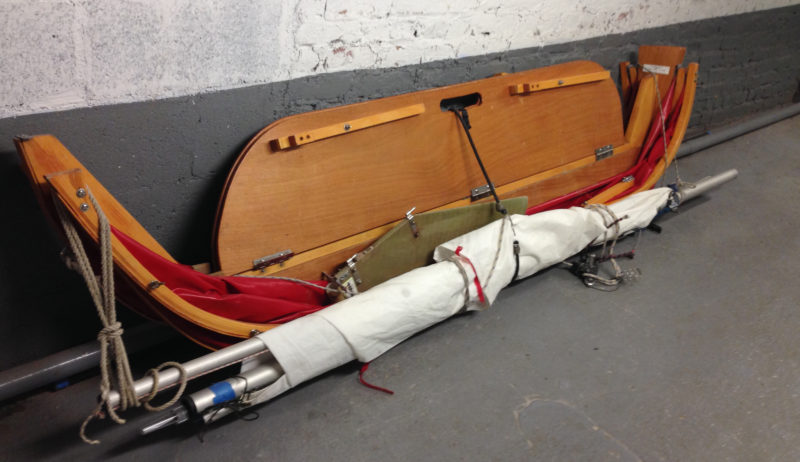 Matthew McGregor-Mento
Matthew McGregor-MentoThe folded Fliptail, together with its sailing rig make a compact bundle that’s not too much trouble to store. A small set of wheels eases walking the boat to the launch site.
I have always had a love for things that fold. I have three folding kayaks and two folding bikes. I designed and built two folding surfboards: a folding long board and a soft short board that fits in an airline carry-on bag. My dining room table is actually a portable picnic table that folds down into a neat little rectangle I can store in a clothes closet. My affinity for folding things comes from living in a cramped Manhattan apartment and my fascination for the engineering that goes into an elegant folding design. I did some research on the Fliptail at the Wooden Widget website, and was really impressed by the videos of it sailing and the ease and speed of folding it. After I watched the video of a Fliptail being quickly folded and driven away by a folding bike that had stowed aboard the boat moments before, I knew I had to have one.
If you live in a big city like me, you probably have no car and no room to store a sailboat. In Manhattan, yacht clubs are, of course, expensive, and marinas charge an arm and a leg to store a boat ashore, even more to rent a slip, and the handful of moorings that are available have a wait list that can be years long. I can store the Fliptail in my basement (it would even fit in a closet), wheel it to the riverside on a kayak dolly, and assemble the boat, completely ready to sail, in about 10 minutes. It means that I can go sailing on a whim if I have a couple hours free. I don’t have to make special plans with my wife and block out a half day to go sailing.
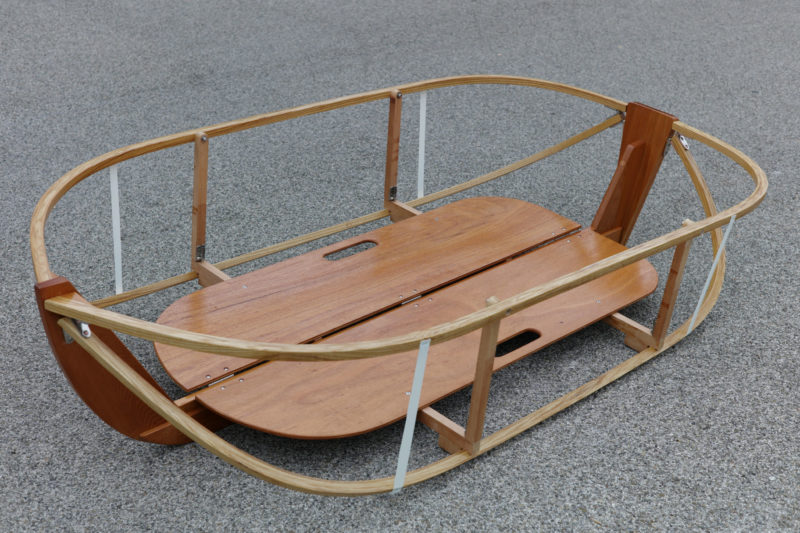 Benjy Benjamin
Benjy BenjaminThe chines and gunwales meet the stem at an angle and require small triangles of wood to accommodate the hinges.
The first thing you notice when you meet a Fliptail face to face is that it folds smaller (7′2″ x 24″ x 10″) and faster than you would imagine. If you’ve ever folded a portable baby crib, it has that same kind of magic-trick feel. The boat’s laminated keel, chines, and gunwales are all hinged together and fan out to support a PVC-reinforced polyester fabric skin. To unfold the boat you release a small Velcro strap and spread the sides out; the hinged floorboards flop down into place.
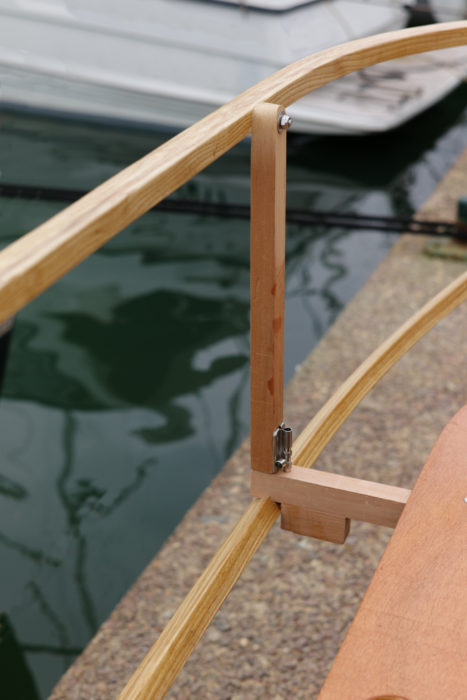 Benjy Benjamin
Benjy BenjaminSliding bolts keeps the uprights lined up over the cross beams and small notches in the chines keep the crossbeams where they belong.
Once extended, the sides are locked into place with four supports between the gunwales and the chines. There’s nothing complex about the supports, and it takes just a few seconds to secure each of them. Another four beams pivot out from the keel to the chines. Once they are square to the keel, you just position the vertical supports to meet them and secure each with a barrel bolt. To fold the frame back up you unlock the barrel bolts and release the supports. The floorboards fold up, and when you lift them by their handles the whole boat just folds up neatly, ready to be carried away.
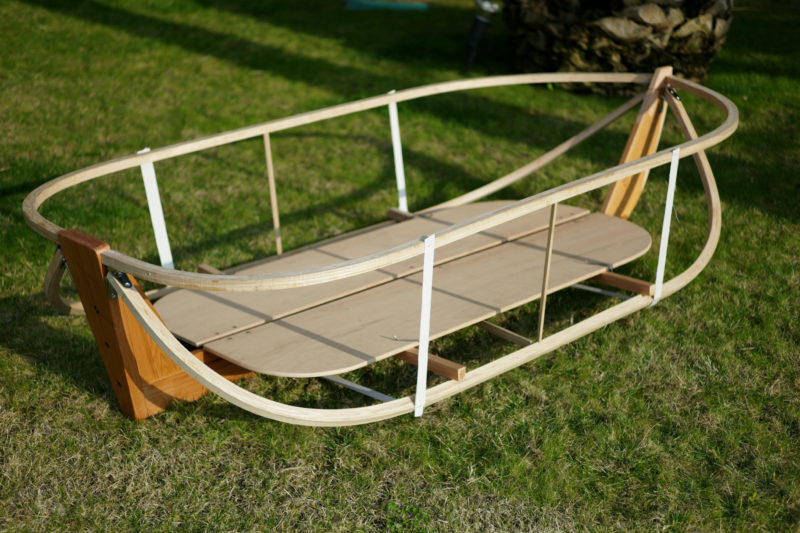 Benjy Benjamin
Benjy BenjaminThe narrow transom stern is built solidly and has enough width at the top to take on a small outboard motor.
Robin “Benjy” Benjamin, the Wooden Widget designer, made the Fliptail to be a very pleasantly stable boat under sail. It has a lively feel in a breeze, and while you might heel a little, its broad beam, carried almost from end to end, assures that it’s unlikely you’ll capsize unless you really screw something up. I’ve added a jib just for fun, and even with the extra sail area, the Fliptail shows no signs of getting close to turning turtle. The boat sails as you’d expect of a short, beamy pram, but despite its unusual construction, it points to windward fairly well. Because the boat is so light, it rides right over the chop and boat wakes. It has handled everything I’ve encountered sailing the busy wake-ruffled Manhattan waterways.
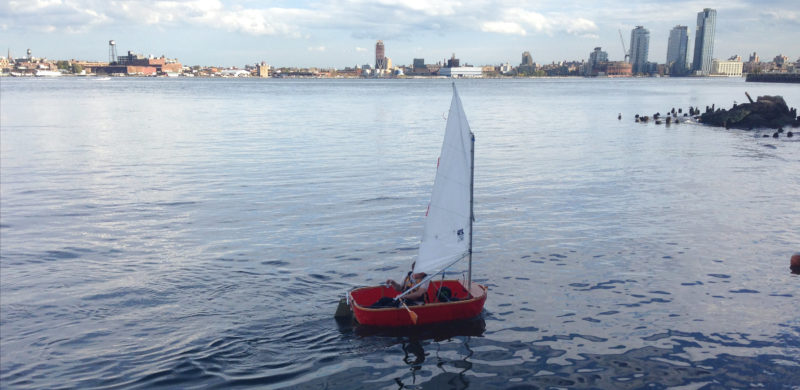 Matthew McGregor-Mento
Matthew McGregor-MentoIn an urban environment that’s not conducive to having a small boat on a trailer to go with it a compact folder offers access to the water.
I have also been pleasantly surprised by how well the Fliptail rows, though I have to confess I’ve had no experience rowing beyond the rowboats on The Lake in Central Park. I once sailed into the mouth of New York’s infamous Hell Gate, a narrow tidal strait in the middle of the East River, and had to take to the oars to fight the current. With a fair amount of effort, I skirted the shore, working upstream, until I rounded a bend and broke into quieter waters. I’ve also rowed the boat pleasantly for long stretches on the upper Harlem River.
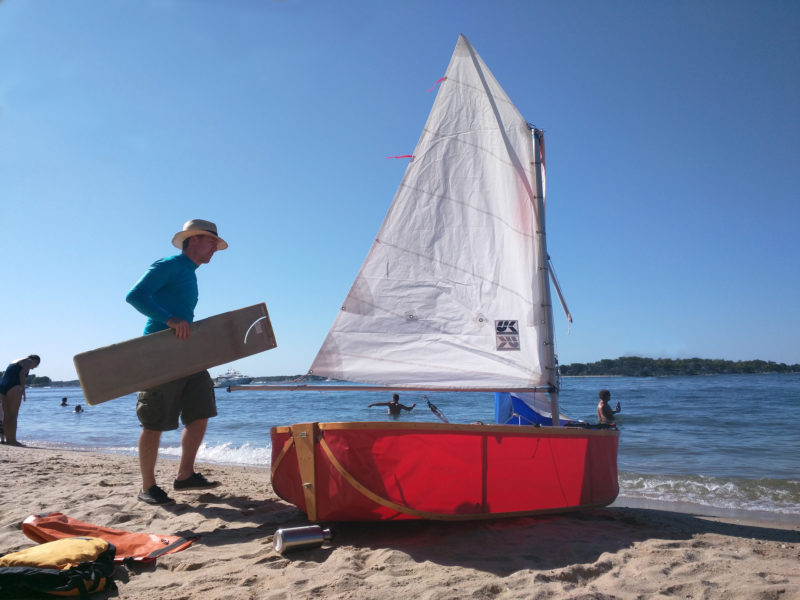 Matthew McGregor-Mento
Matthew McGregor-MentoThe single leeboard stays on the same side of the hull for both port and starboard tacks. When the board is on the upwind side, a lacing hook fastened horizontally to the chine engages a pad eye on the centerboard to keep the board from getting pried away from the hell.
On the Wooden Widget site it says, “You can’t buy cool. You have to build it.” I was lucky enough to buy one of their boats, but that’s pretty rare. If you want your own Fliptail, it’s available as a set of plans. And although I didn’t build my Fliptail, I did retrofit it for sailing. Benjy graciously sent me the boat plans, which included the step-by-step instructions and many helpful photos for adding the sailing rig. The instructions were easy to follow (as were the instructions for the build), and I was able to adapt readily available Optimist sailing dinghy parts for the rig.
Benjy specs a sail for the Fliptail that can be built from a kit ordered from Sailrite or by cutting down an Optimist sail. He advised the kit sail performs better than the modified sail. I ordered my kit from Sailrite and had it sewn up by UK Sailmakers on City Island in the Bronx. Despite the sail’s small size, I asked for reefpoints, thinking I might someday cruise with the boat and safely sail in slightly stronger breezes.
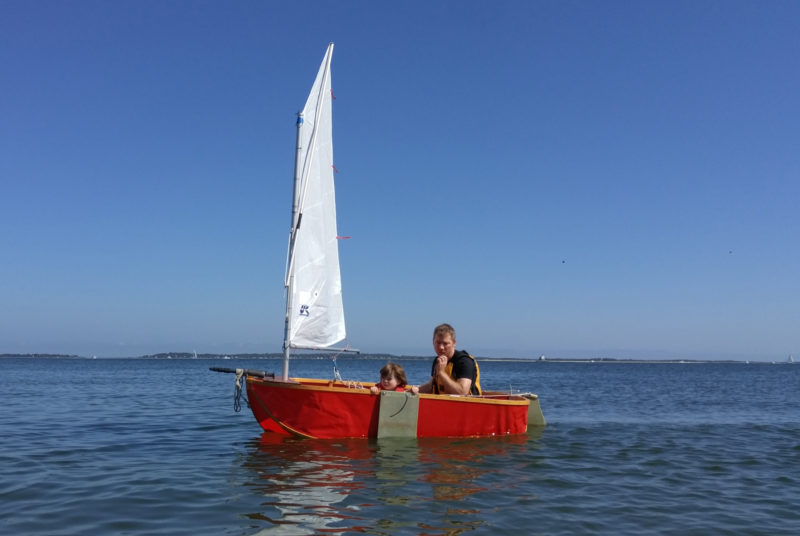 Matthew McGregor-Mento
Matthew McGregor-MentoAs short as the Fliptail 7 may be, it has room for two, even two adults.
I did make a few modifications to the sail rig. The plans call for a mast made by lengthening an Optimist mast by 9.5cm, but I added a 40cm extender tube, available from an Optimist parts supplier, so I can tack without having to duck low under the boom. The taller rig sacrifices some stability, but the Fliptail is beamy and I’ve been pleased with how well it resists heeling. Instead of using a tiller, I rigged rope steering to gain a bit more room in the cockpit. This really isn’t necessary, but I discovered an unintended perk: I can make the boat self-steering using clam cleats I’ve fastened to each gunwale. Despite Benjy’s prudent recommendation to the contrary, I rigged the mainsheet with a blocks and a cam cleat. The mainsheet is meant to be a single line, held by hand for safety’s sake, but I like being able to set the sail to take care of itself and free up a hand. In a very light breeze it’s fun to make the boat sail itself completely hands-free and just sit back and enjoy the ride. I fastened the block to the keel with a quick-release pin (Zach’s brilliant idea) that allows it to be quickly set up when launching and removed to allow the boat to fold properly.
The Fliptail makes it possible for me to use public transportation for my sailing trips and launch from places farther than I can walk. I can launch near one bus stop or rail terminal and land near another; I’m not limited to out-and-back voyages. For a recent trip I departed from the 20th Street launch—really just a pile of sand and rocks around an old dilapidated wooden drain that’s completely underwater at a spring high tide—and after sailing, rowing, and mostly ghosting along on the current for 12.5 miles, I landed at 215th Street, packed up the Fliptail, and took the subway home.
I’d highly recommend a Fliptail to any sailor who wants a very compact tender or who lives in a house or an apartment with no room to keep a boat. The boat’s ease of storage and portability make having a boat a new possibility for many, and its quick assembly time offers little impediment to getting afloat. My Fliptail 7 is 7′2″ long. There are two other versions: the even smaller Fliptail 6 at 6′2″, and the comparatively roomy Fliptail 9 at 9′ even. At 33, 39, and 50 lbs, respectively, they’re all light enough to put on a regular roof rack—that’s if you happen to lack the good fortune to live on Manhattan and are forced to own a car.![]()
Matthew McGregor-Mento lives in Manhattan with his wife Emma, his 18-month-old daughter Kirra, and 3 cats. He leads a creative technology group at a worldwide advertising agency. He bought his first small boat, a Snark Sea Skimmer, in the 80s for $50 at a garage sale and, sadly, sailed it only once. He didn’t sail again until 2013 when he rescued and rehabilitated a derelict Force 5 sailing dinghy that he found among discarded construction materials at a recycling warehouse. He’s currently designing a backpackable sailboat and has a Mirror Dinghy waiting for him in a shed in Australia where he’ll be living in 2020 if all goes to plan.
Particulars
[table]
Length/ 7’2″ (218cm)
Beam/40″ (102cm)
Height/17″ (44cm)
Weight/39 lbs (18 kilos)
Capacity/Approx 440 lbs (200 kilos)
Power/3.3 hp (max)
Sail area/25 sq ft (2.5 sq meters)
[/table]
Plans for the Fliptail 7 (£30 or about $42 USD) and other folding and lightweight boats are available from Wooden Widget.
Is there a boat you’d like to know more about? Have you built one that you think other Small Boats Monthly readers would enjoy? Please email us!
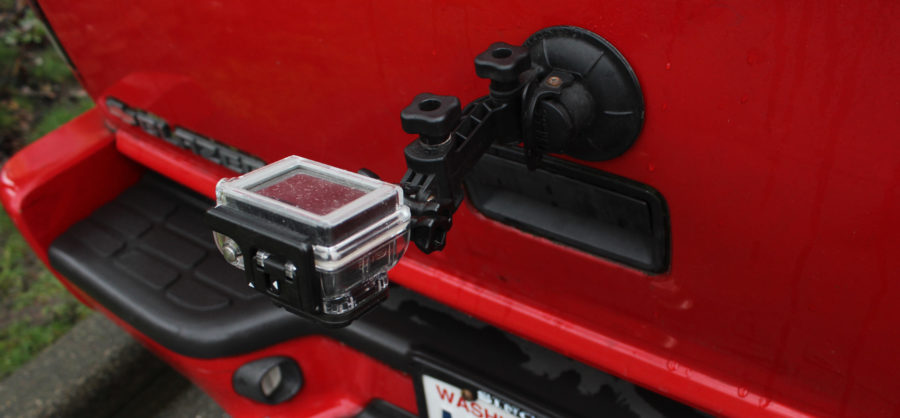
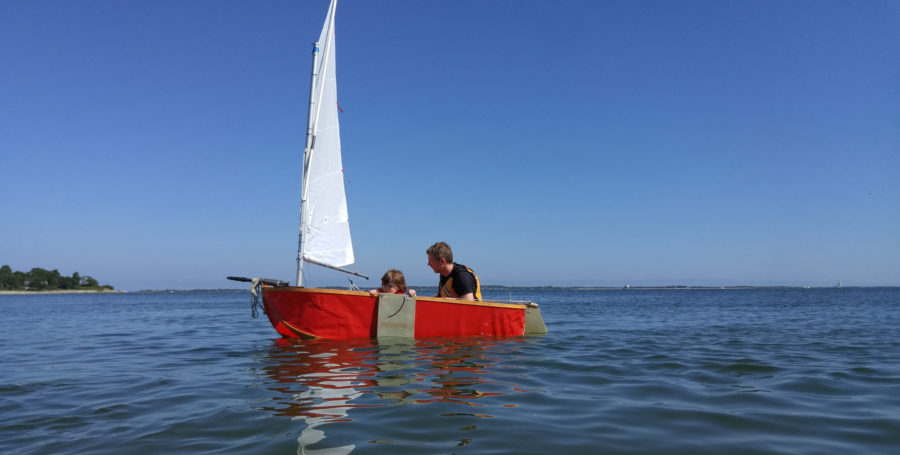
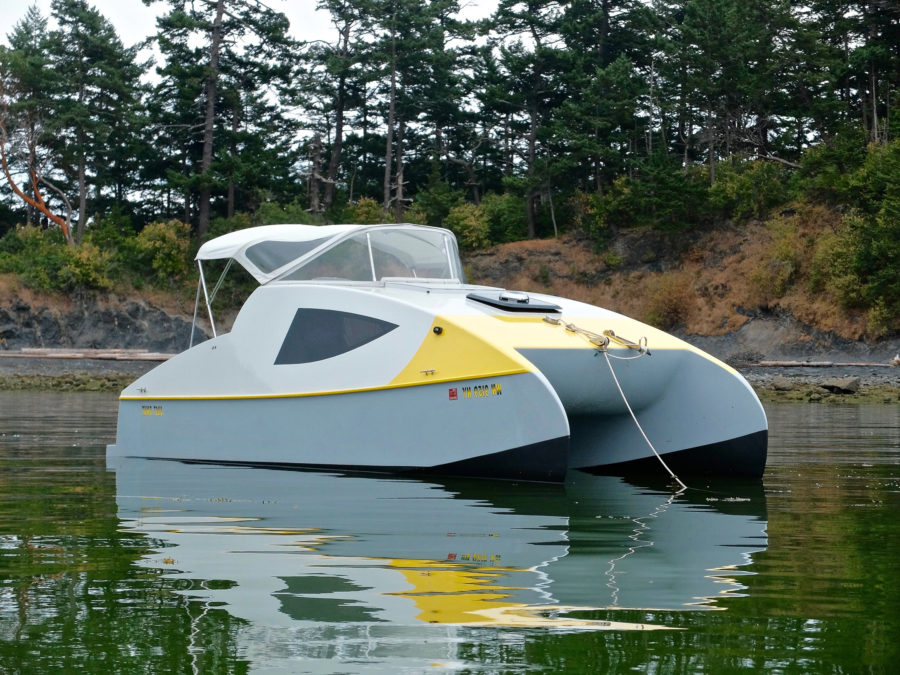
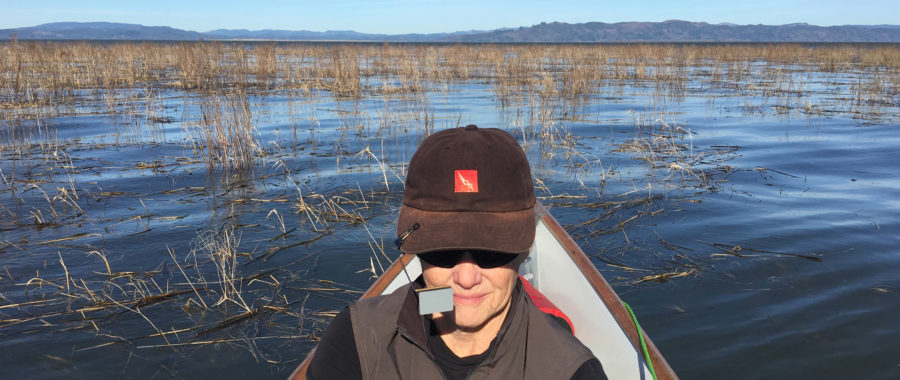
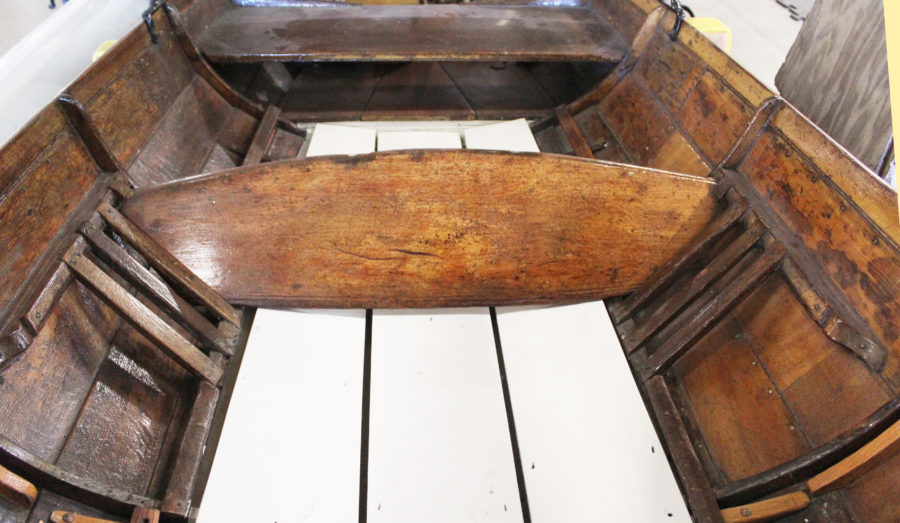
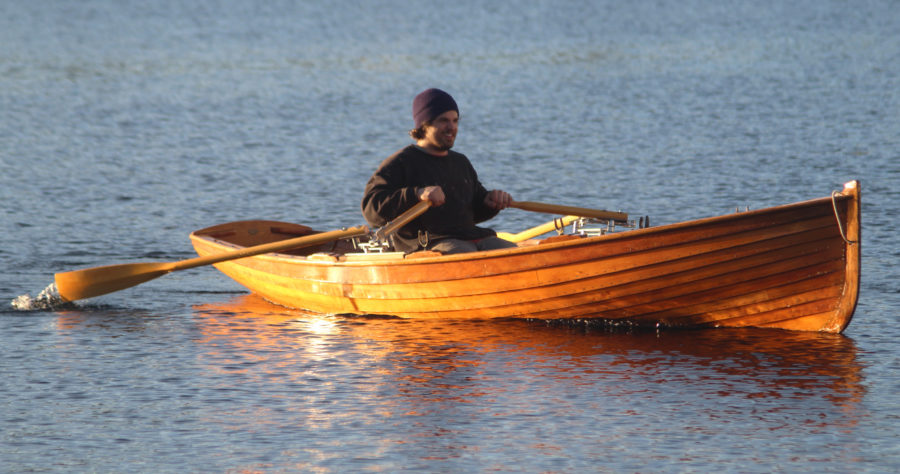
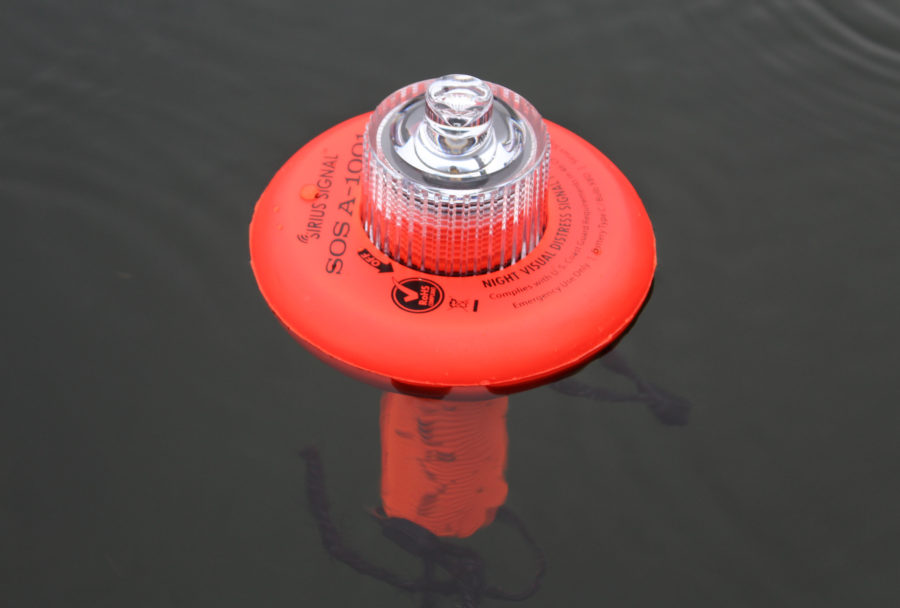
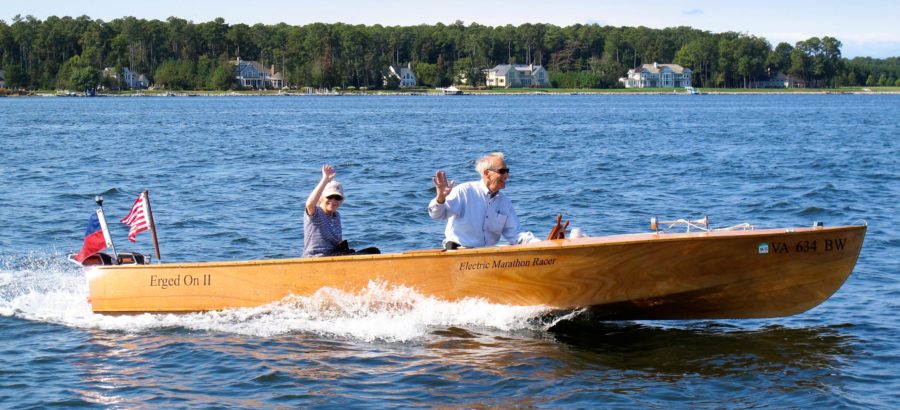
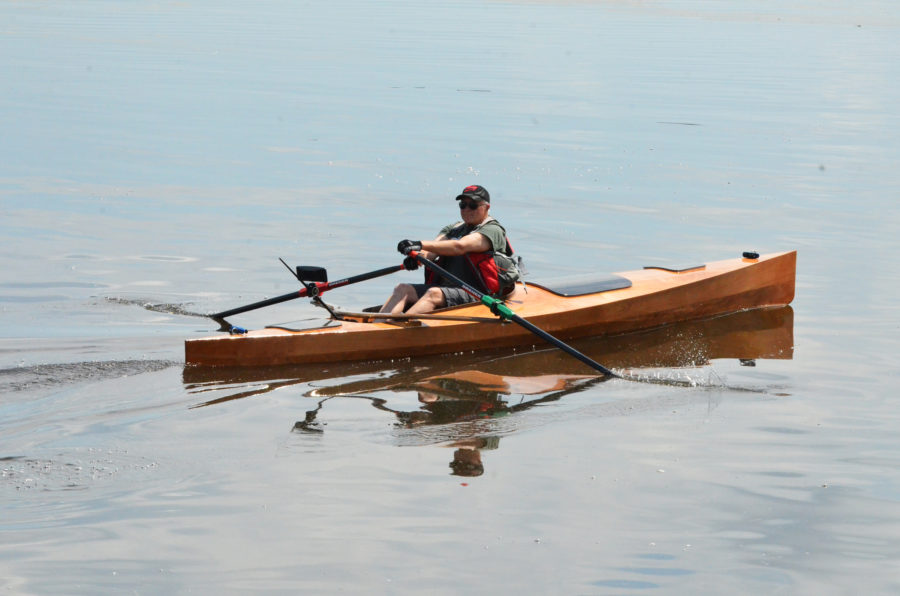
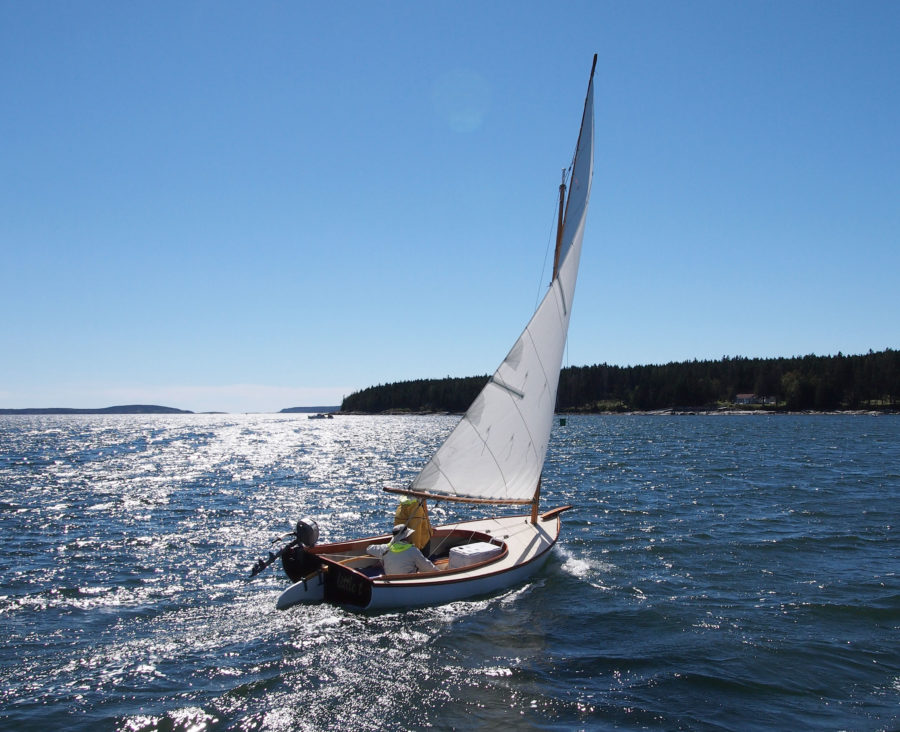
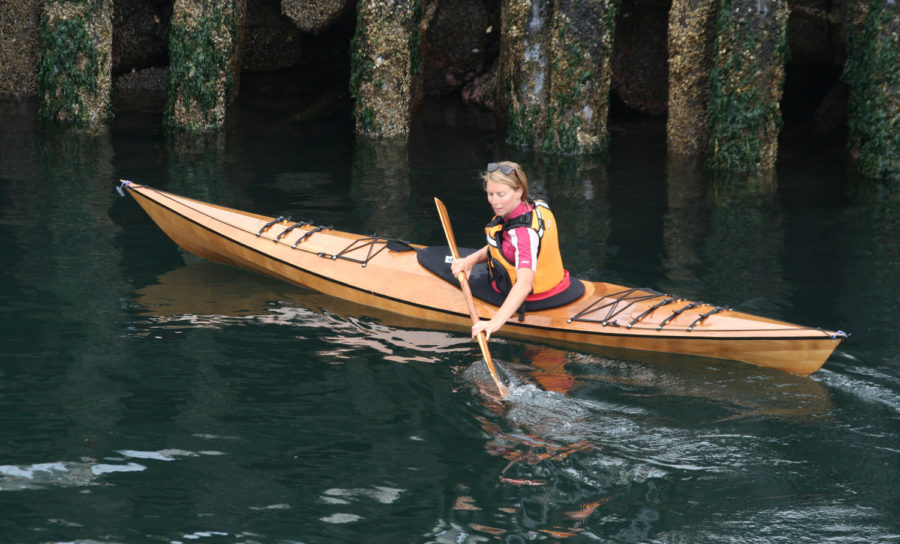
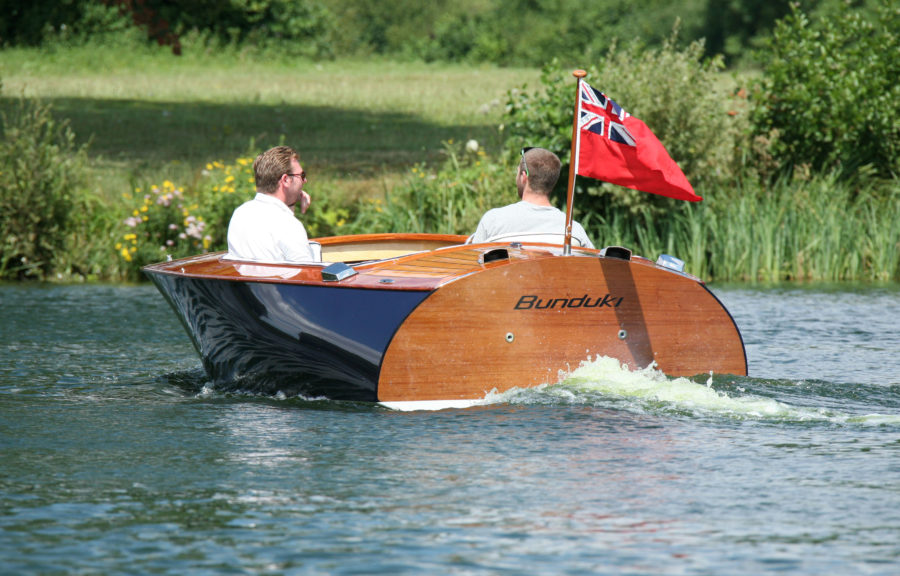
Does your love of all things folding extend to other forms of collapsibility or portability? I ask because I was just introduced to PAKAYAK (Pakayak.com), which is billed as “the world’s first sectional nesting kayak.” A 14 foot kayak nests down about 3.5 feet, filling similar requirements for small space and portability.